Viewpoint: Why India's millennials support PM Narendra Modi
- Published
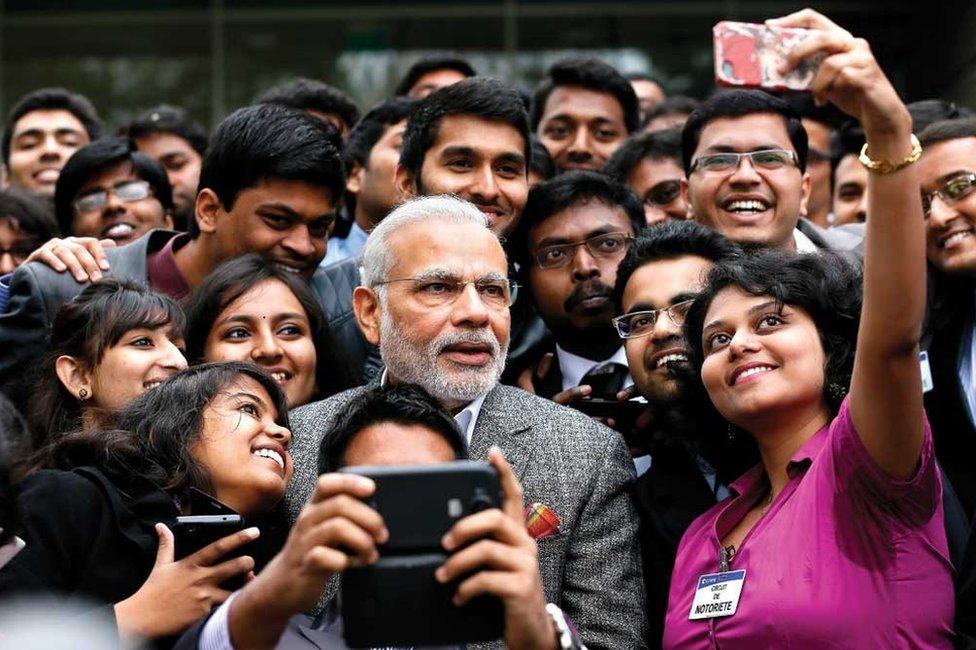
Prime Minister Narendra Modi remains popular with young Indians
India has one of the world's youngest populations, with millennials - those born between 1981 and 1996 - making up over 400 million of its people. Author Vivan Marwaha considers what India's youth want from their politicians.
In April and May 2019, as I researched my book on the economic aspirations, social views, and political attitudes of Indian millennials, I camped out in small towns and cities across northern and southern India, talking to young Indians about the country's ongoing general elections.
At every town square, I met young men and women, all seemingly unemployed and disengaged from economic activity.
According to conventional wisdom, incumbent Prime Minister Narendra Modi was in trouble: the country was experiencing a 45-year high unemployment, disproportionately impacting India's youth, the world's single-largest labour force.
The economy had come to a crawl and a sense of malaise prevailed everywhere I went. Many of the millennials I was interviewing, including those in their 30s, were living at home with parents, reliant on their families for basic purchases.
Most of these people had voted for Mr Modi and his ruling Bharatiya Janata Party (BJP) five years earlier, in 2014, buying their promises of wide-scale development and hundreds of millions of new jobs for India's booming population of young people.
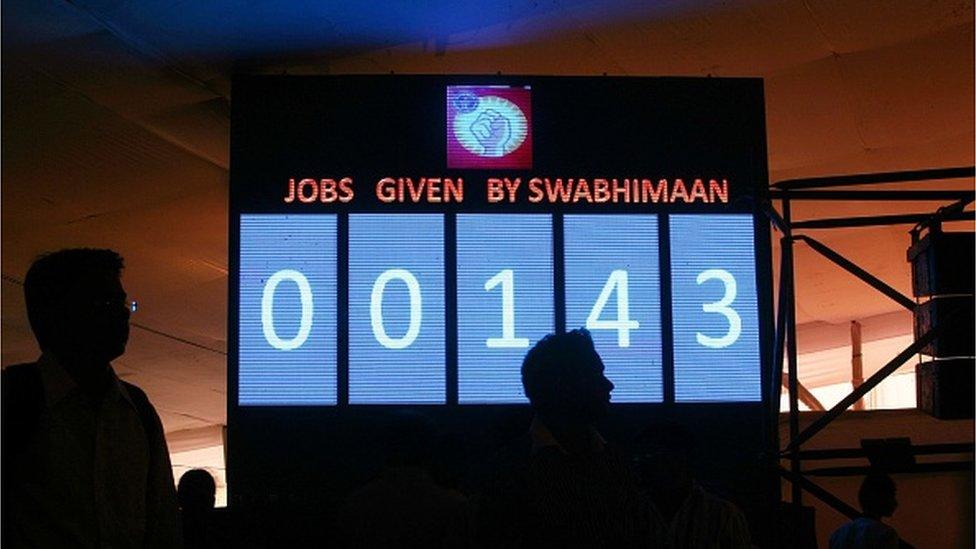
Unemployment is growing across India - this display shows how many jobs were given at a job fair
But conventional wisdom was turned on its head when the prime minister and the BJP were re-elected with an even bigger majority than the 2014 election, shattering decades-old political dynasties in their family fiefdoms.
The writing was on the wall: young Indians had firmly consolidated behind Mr Modi. Post-poll data confirmed this, with nearly 40% of those aged 18-35 voting for the BJP.
In many other countries, this may not make sense: why would young voters, who hadn't advanced much, seen their trust broken, and had arguably been set back by years under this regime, return the incumbent to power?
The answer to this question also defied conventional wisdom on Indian elections, given that India has a long record of voting out incumbent politicians.
But with millennials leading the charge, Indian politics has gone through a fundamental reordering: young voters want leaders who speak, pray, and look like them.
For decades, India was governed by English-speaking, Western-educated technocrats who shared little in common with the country's largely-agrarian and vernacular-speaking population.
Although many members of parliament and state assemblies came from the grassroots, those who wielded cultural and political power in Delhi did not.
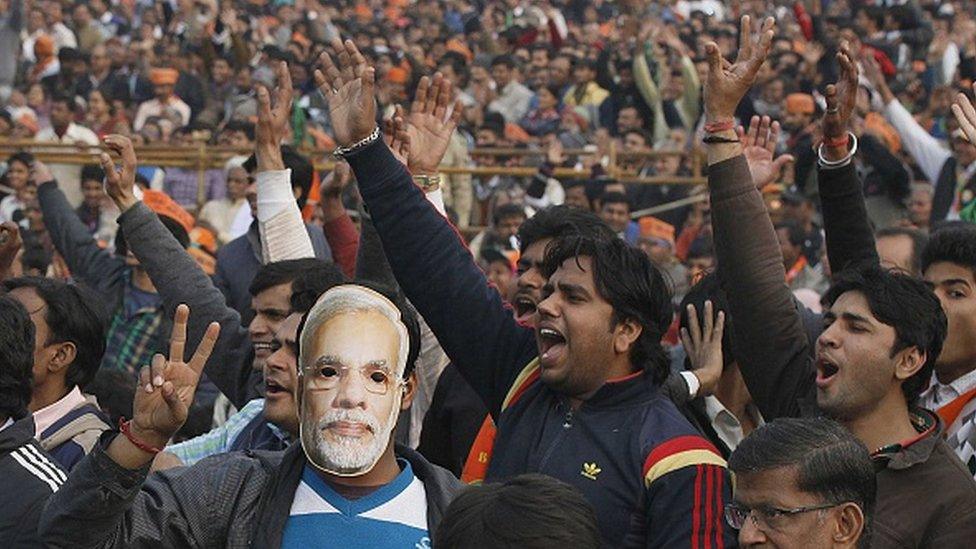
Nearly 40% of those aged 18-35 voted for the BJP in the 2019 elections
Aspirational young Indians today are looking for role models who they believe will protect them, and they are attracted to politicians with whom they share stories and experiences. Language is a particularly emotional issue.
English has long been a reserve of the Indian elite, and an aspiration of middle-class Indians seeking upward social mobility.
But in the 2019 elections, Hindi-speaking politicians, shattering the last vestiges of these elites, were rewarded by voters, while the opposition Indian National Congress, led by English-speaking dynasts from the Nehru-Gandhi family, was nearly wiped clean from the country's "Hindi belt" - states mainly comprising Hindi-speaking people.
As I spoke to Indian millennials, they told me about how Mr Modi delivered speeches in Hindi to audiences in New York, London, and Sydney, and how proud that made them. The thinking went: "if he can make it there, so can we".
In an unstable and volatile economy, Indian millennials seek leaders who promise stability and security, and Mr Modi and his party's messaging captured this sentiment to impressive results.
Shortly after the 2019 Pulwama bombings in Kashmir - and the subsequent air strike in Balakot in Pakistan - every BJP leader added the designation of "chowkidar" (watchman) to their Twitter handle, signalling their promise to Indians to protect them from all enemies - foreign and domestic.
To many in India's Hindu majority, it assures them that the BJP has their back, promising them benefits, public services, and welfare schemes.
It is no surprise that shortly before election dates were announced, the party promised to reserve an additional 10% of seats in public universities and government jobs for economically backward sections of society belonging to general caste groups, taking total reservations in the country to 60%.
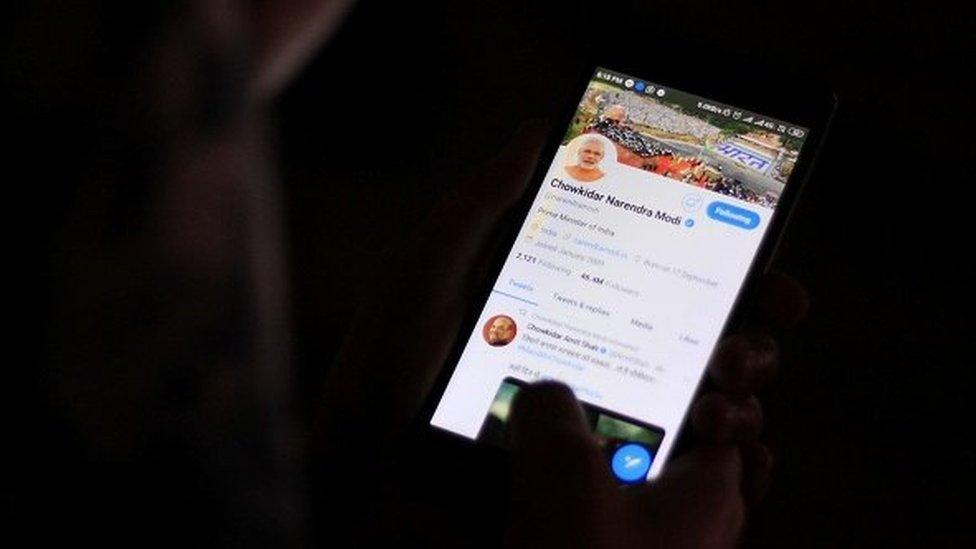
Mr Modi added Chowkidar - or watchman - to his name on social media sites after the 2019 Pulwama attack
The move was an appeasement tactic aimed at upper-caste Hindus, but economically left-behind voters. As the country wasn't creating enough job for its youth, it became imperative to secure government jobs for these voters. A government job becomes lifetime employment, crucial protection for those being left behind after years of "jobless growth" - an economy experiencing growth without an expansion of jobs.
As hundreds of millions of Indians were lifted out of poverty in the decades after the country's 1991 economic reforms, India's next generation - its millennials - want to more than just survive; they want to thrive in a world where smartphones and the instant availability of information has made them aware of glittering cities beyond their stunted neighbourhoods.
And although his government has not delivered employment growth or kept its economic promises, Mr Modi speaks the language and aspiration of these millennials - offering them bullet trains, world-class cities, and a country that shines on the world stage.
Mr Modi's own attire is aspirational: in retiring the traditional white kurta (tunic) and pyjama that had become the standard uniform for male politicians, the prime minister's wardrobe of expensive, well-made, colourful garments highlights not just his own upward mobility, but that of the country (if you believe in his vision).
Contrary to what conventional wisdom may lead many to believe, young Indians remain squarely behind Mr Modi as he dominates the cultural and political narrative of the country.
Any national-level politician hoping to counter his massive popularity will only emerge from the grassroots, once again speaking the language of the people against a government not delivering on its promise.
Vivan Marwaha is the author of 'What Millennials Want' (Penguin Viking)

You might also be interested in:
Modi's India: Is Modi failing the jobless?
Related topics
- Published22 June 2021
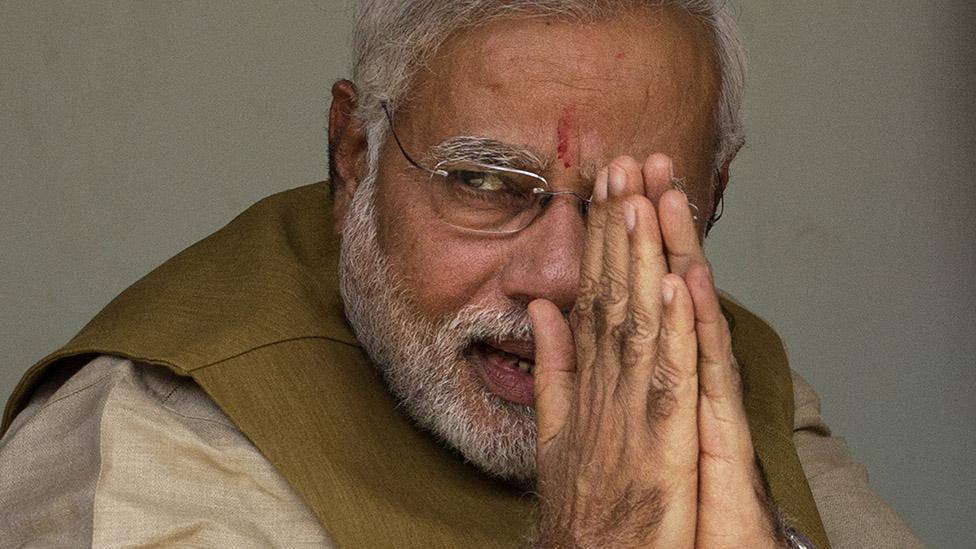
- Published31 August 2020